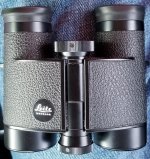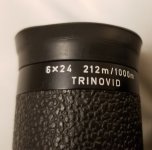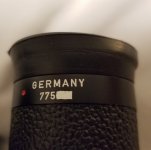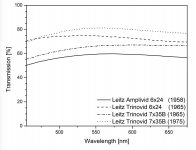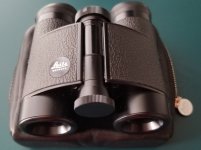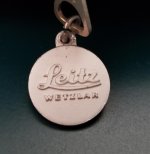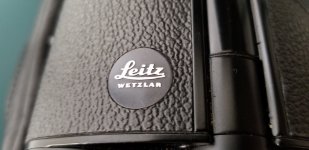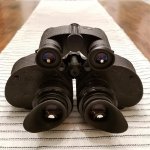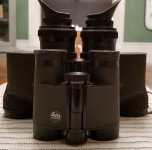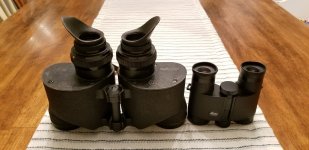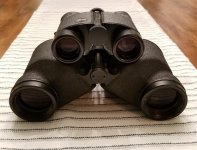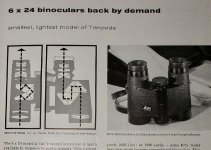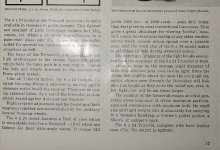I can't deny that the appearance, handling and mechanical quality of the old Leitzes are very seductive, but with optics of that vintage one must anticipate that there will be issues that need fixing, even if the binocular's exterior condition is excellent (not really the case with the one in the OP's photos). It's worth remembering that binoculars like this Trinovid could be 30 to over 50 years old - and with optical devices that is a very long time indeed in which issues may develop. Consider dries's note that the seals of the Leica BA/BN series can deteriorate and potentially allow fungus growth inside the binocular. These are binoculars a generation later and designed to be fully sealed. I have purchased, I think, five binoculars from the 1950s-1960s era and four have needed haze or fungus cleaned off their optical surfaces.
It'll be interesting to see what Suddarth's verdict is, and the original poster's opinion once it gets back fully overhauled, as I'm sure it will be (especially in comparison to the Zeiss West 8x30B he's mentioned owning). For what it's worth, pricing-wise, an 8x32 non-B went down to about 179 GBP earlier in the year before selling - so 150 USD doesn't seem unreasonable. But, sweet though the old Trinovids are, I'd be very hesitate to purchase any single-coated, non-phase coated roof binocular (the five purchases mentioned above were all porros), in part because of their complexity and in part because they are just too far behind optically. Then again, if - apparently - one can stick "a cut up Post-it on one of the lenses" and find that "Nobody could tell that there was a big blob on one of the lenses", maybe things like multi-coating and phase-coating (or haze in the prisms...) are but BB stacking... :cat:
It'll be interesting to see what Suddarth's verdict is, and the original poster's opinion once it gets back fully overhauled, as I'm sure it will be (especially in comparison to the Zeiss West 8x30B he's mentioned owning). For what it's worth, pricing-wise, an 8x32 non-B went down to about 179 GBP earlier in the year before selling - so 150 USD doesn't seem unreasonable. But, sweet though the old Trinovids are, I'd be very hesitate to purchase any single-coated, non-phase coated roof binocular (the five purchases mentioned above were all porros), in part because of their complexity and in part because they are just too far behind optically. Then again, if - apparently - one can stick "a cut up Post-it on one of the lenses" and find that "Nobody could tell that there was a big blob on one of the lenses", maybe things like multi-coating and phase-coating (or haze in the prisms...) are but BB stacking... :cat:






